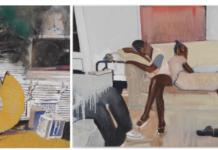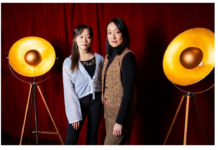The Royal Academy of Arts presents Spain and the Hispanic World, celebrating the unrivalled collection of the Hispanic Society Museum & Library in New York. This landmark exhibition presents a visual narrative of the history of Spanish culture, bringing together outstanding works from Spain and colonial Latin America, from antiquity to the early 20th century. Spain and the Hispanic World reflects the great diversity of cultural and religious influences, from Celtic, Islamic, Christian and Jewish to American, African and Asian, that have shaped and enriched Spanish culture across four millennia. Presented chronologically, the selection of over 150 works includes paintings, sculptures, silk textiles, ceramics, lustreware, silverwork, precious jewellery, maps, drawings and illuminated manuscripts.
Founded in New York in 1904 by Archer M. Huntington, the Hispanic Society Museum & Library is home to the most extensive collection of Spanish and Hispanic art outside of Spain. This is the first time the collection has been presented in the UK.
Exceptional paintings include
The Duchess of Alba, 1797, by Francisco de Goya (1746-1828)
as well as Gaspar de Guzmán, Count-Duke of Olivares, c. 1625-26, and Portrait of a Girl, c.
1638-42, by Diego Velázquez (1599-1660). The exhibition also includes paintings by Luis de
Morales (1510/11-1586), El Greco (1541-1614) and Francisco de Zurbarán (1598-1664) as
well as post-Impressionist and modern artists such as
Joaquín Sorolla (1863-1923)
, Ignacio
Zuloaga (1870-1945) and José Gutiérrez Solana (1886-1945). The final section of the
exhibition features a
large-scale panoramic gouache for the Vision of Spain, the monumental
site-specific mural painted by Sorolla for the Hispanic Society between 1912 and 1919.
Sculptures include polychrome reliquary busts such as Saint Acisclus, c. 1680, by Pedro de Mena (1628-1688), considered to be one of the most important sculptors in 17th century Spain, as well as the Mater dolorosa and Ecce homo, 1675, by his daughter Andrea de Mena (1654- 1734).
Highlights from the Hispanic Society’s collection of decorative arts include exceptional earthenware bowls from the Bell Beaker culture, c. 2400-1900 BC, Celtiberian jewellery from the Palencia Hoard, c. 150-72 BC, discovered in Palencia in 1911 during the construction of a railway cutting, Hispano-Islamic silk textiles including the Alhambra Silk, c. 1400, which
recalls the tile designs of the Alhambra palace complex in Granada, as well as some of the finest examples of lustreware from the 14th -16th centuries from Manises, Valencia.
Spain and the Hispanic World also includes treasures from the Hispanic Society’s renowned library, the most important collection of Hispanic manuscripts and rare books outside of Spain. Highlights include a beautifully illuminated Hebrew Bible, after 1450-97, and an exceptionally rare Black Book of Hours, c. 1458, which was probably commissioned by María of Castile (1401-1458) upon the death of her husband, Alfonso V of Aragon (1396-1458).
Rarely seen objects from Spanish colonial Latin America, of which the Hispanic Society boasts a particularly significant collection, create a compelling parallel narrative to cultural
developments taking place across mainland Spain. Highlights include the celebrated World Map, 1526, by Giovanni Vespucci (
1486-after 1527), one of the most impressive nautical
charts produced during the Age of Exploration, which was probably intended as a gift for
Charles V on his marriage to Isabella of Portugal as well as
the Map of Tequaltiche, 1584, from the Relaciones Geográficas made on the order of Philip II. Other Latin American works include a remarkable collection of decorative lacquerware from Colombia and Bolivia, a group of four polychrome sculptures from Ecuador, The Four Fates of Man: Death, Soul in Hell, Soul in Purgatory, Soul in Heaven, c. 1775, attributed to Manuel Chili, called Caspicara (1723- 1796), as well as paintings such as the Young Man from the Coast (El Costeño), c. 1843, by
José Agustín Arrieta (1803-1874).
Guillaume Kientz, Director & CEO of the Hispanic Society Museum & Library said: “We are overjoyed to collaborate with the Royal Academy of Arts to showcase items from The Hispanic Society Museum & Library for the first time in the UK. We hope visitors will resonate with the sheer diversity of influences, which has permeated the Spanish speaking world throughout the ages and today.”















